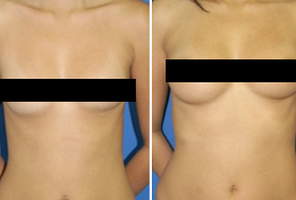What is Triniti?
Triniti is an effective facial rejuvenation procedure that incorporates three popular anti-aging technologies into one convenient treatment session. As a virtually pain-free, cost-effective alternative to surgical facelifts and other more invasive procedures, the Triniti skin series uses Fotofacial RF Color Correction, ReFirme Skin Tightening and Matrix IR Fractional for Wrinkles to provide an all-inclusive facial renewal procedure that results in a more youthful appearance.
How does Triniti work?
The Triniti skin series is a three-step process using laser and light energy, as well as radio frequency, to provide photorejuvenation and to heat the targeted tissue in a manner that promotes collagen production. The first technology administered during the procedure is Fotofacial RF Color Correction, which uses the heat from radio frequency and pulsed light to improve the color, tone and texture of the skin. Because spider veins and pigmented areas absorb this pulsed light differently, it is an effective treatment to improve their appearance. ReFirme Skin Tightening is then administered, which is a cosmetic treatment that encourages tighter bond formation in collagen and new collagen production through the use of infrared light and radio frequency. Matrix IR Fractional for Wrinkles is the third step in the Triniti skin series and uses intense fractional infrared light to encourage contraction and remodeling of collagen, as well as increased production of new collagen.
What areas of the body does Triniti treat?
Facial and neck rejuvenation are the primary uses for the Triniti skin series.
What are the advantages of Triniti over other procedures?
The Triniti skin series is a non-invasive, cost-effective cosmetic treatment procedure that provides long lasting results that generally look more natural than procedures that deliver similar results, such as surgical facelifts. It also allows the convenience of a single visit for three different treatments, which provides the opportunity to address multiple skin concerns at the same time. This procedure can also be combined with other treatment options in the same session and generally requires a series of only three sessions to achieve optimal results, which is fewer than typically required with other options.
Who is a candidate for Triniti?
The Triniti skin series can be used on most skin colors and types and is particularly appropriate for people who wish to combat the signs of sun damage and aging, such as wrinkles, sagging skin, uneven skin tone, sun spots, spider veins, nasolabial folds and other issues with skin tone and texture. This procedure is an excellent choice for patients looking for facial rejuvenation with no downtime and virtually no pain or discomfort.
How is Triniti performed?
The Triniti skin series procedure begins with a consultation where the patient and the provider determine the areas to be treated and how many sessions will be needed to achieve the desired results. In most cases, patients will need a series of three sessions scheduled at three- to four-week intervals.
During each session, the treatment area will be cleansed and the patient will be provided with protective eyewear to wear during the session. A conductive gel is applied to the skin, followed by the administration of three different treatments, each using a different handheld device. Patients generally feel heat or a hot pinching sensation during the treatment, which can cause some discomfort. Each session will include a three-step process, including photorejuvenation, skin tightening and wrinkle reduction. Each session is typically 40-60 minutes in length, or an additional 15-30 minutes for treating the neck area as well.
What is the recovery like?
Patients are able to return to normal activities immediately after receiving a Triniti skin series treatment and are able to mask possible redness with makeup. For the first few hours after a session, patients may experience some swelling and redness, which, in some rare cases my last a few days or a few weeks. Areas of higher pigmentation will likely darken within the first week after treatment and will subsequently flake off.
What will my results be like?
Most Triniti skin series recipients experience results that gradually improve over the course of receiving treatments and continue to improve in a natural manner as collagen production increases. These results are typically long lasting and most patients are able to maintain optimal results with maintenance treatments every six months.
What are the risks?
The Triniti skin series is a safe, effective cosmetic treatment that very rarely results in negative side effects. Some discomfort may occur during treatment and minor redness or swelling may last for a few hours after the session. This redness and swelling can last up to a few weeks, but this is very rare. Possible side effects include scarring, infection, bruising or pigmentation issues, but there is a very low risk that these side effects will occur.
Is Triniti approved for use in the U.S.?
Yes, the FDA has approved the Triniti skin series for utilization in the United States.
Is Triniti covered by insurance companies?
In most cases, medical insurance policies do not include coverage for cosmetic treatments and procedures, such as the Triniti skin series, unless they are required to maintain or improve the health and wellness of the patient. Patients should discuss payment plans and financing options with their provider during their personal consultation.
How much does Triniti cost?
The Triniti skin series is a cost-effective alternative to more invasive facial rejuvenation procedures. The total cost for receiving this treatment will depend on provider fees, geographical location, the number of sessions needed and other services that may be included in the treatment plan.
Disclaimer: This information is intended only as an introduction to this procedure. This information should not be used to determine whether you will have the procedure performed nor does it guarantee results of your elective surgery. Further details regarding surgical standards and procedures should be discussed with your physician.
By OnlineSurgery Staff
Updated: August 31, 2009

